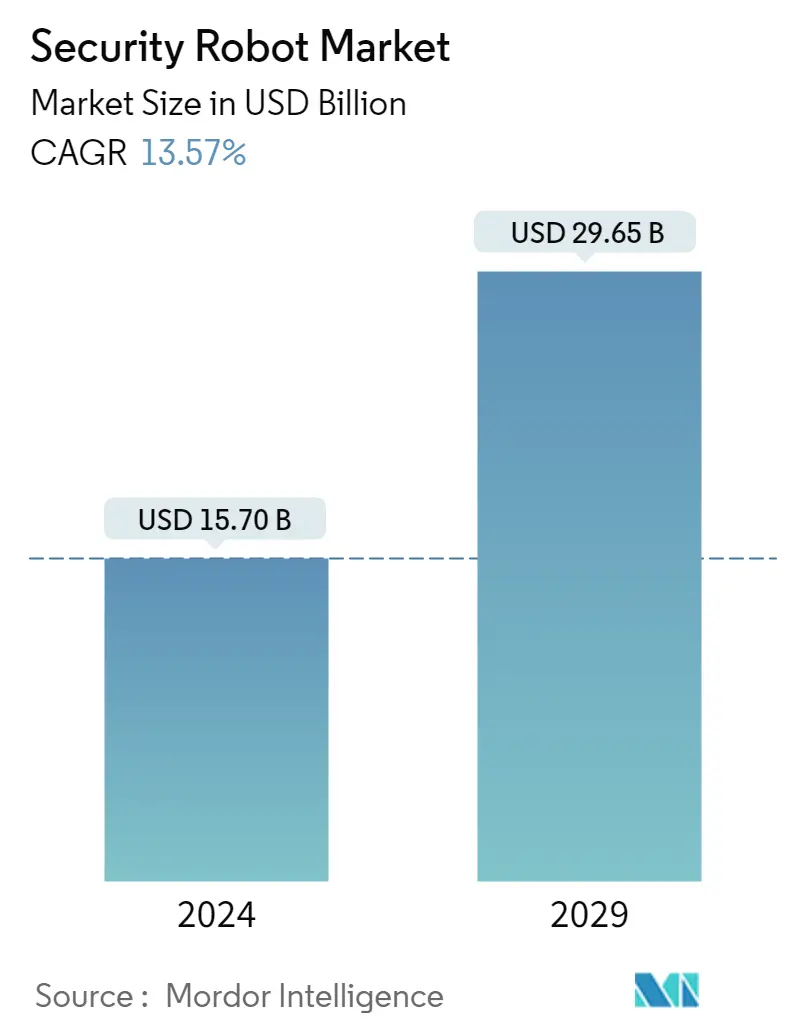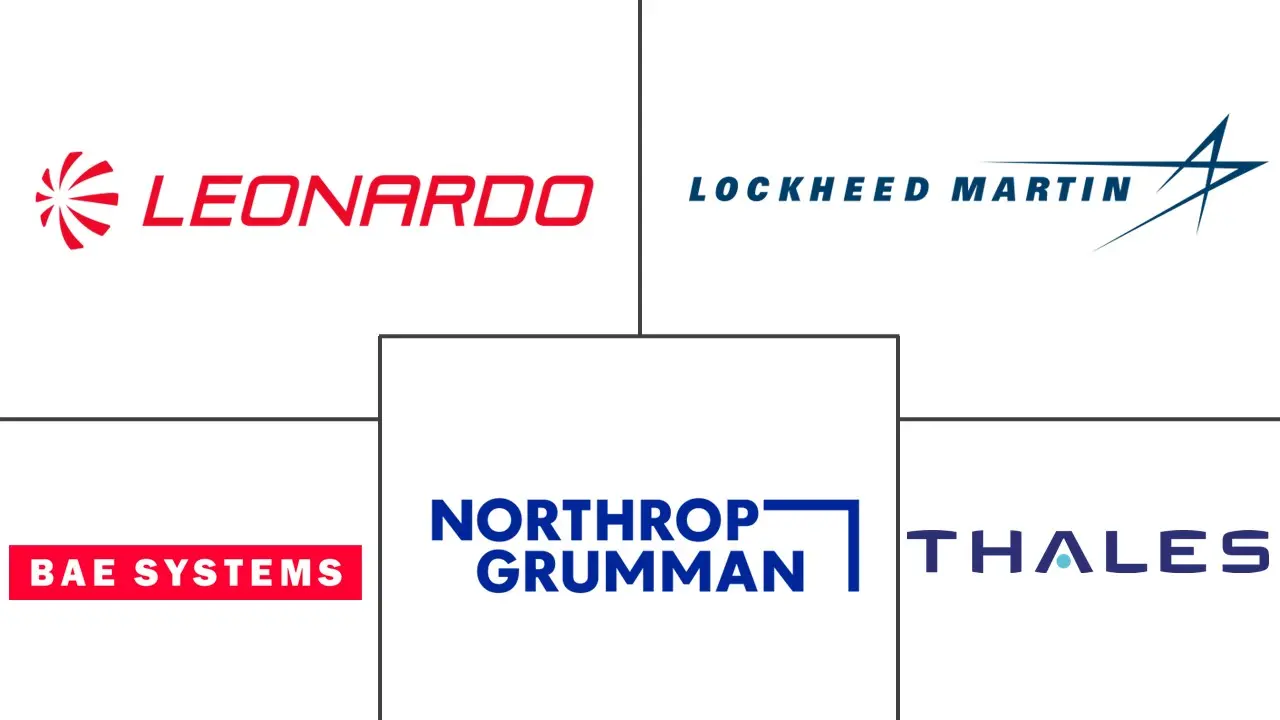Market Size of Security Robot Industry

| Study Period | 2019 - 2029 |
| Market Size (2024) | USD 15.70 Billion |
| Market Size (2029) | USD 29.65 Billion |
| CAGR (2024 - 2029) | 13.57 % |
| Fastest Growing Market | Asia Pacific |
| Largest Market | North America |
Major Players
*Disclaimer: Major Players sorted in no particular order |
Need a report that reflects how COVID-19 has impacted this market and its growth?
Security Robots Market Analysis
The Security Robot Market size is estimated at USD 15.70 billion in 2024, and is expected to reach USD 29.65 billion by 2029, growing at a CAGR of 13.57% during the forecast period (2024-2029).
Also, the rapid evolution in the technology of such robots has led to new functions which enable them to protect the public efficiently.
- The development of automation and sensor technologies has led to a rise in the use of security robots in numerous applications. Because of breakthroughs in neural network technology, these robots might learn over time and become more useful. These sensors help robots analyze their surroundings and provide more precise information. These robots' skills for remote sensing can be used to monitor the region and spot any threats.
- Moreover, the development of new technologies has also significantly improved the capabilities of these robots. Presently, they can be deployed on challenging terrains and environments to perform surveillance and other actions based on analytics. The inclusion of different sensors in security robots has improved the capabilities of robots in analyzing their environment and providing more reliable data. This has significantly benefitted their incorporation into military devices.
- Robotic security systems may have a future, according to developments like K5 by KnightscopeInc. Earlier, these robots had limited capabilities, but with improvements in automation and sensor technology, these robots have been created to be useful in practical applications. These robots now have the ability to learn over time and enhance their functioning due to the development and advancements of neural network technology.
- The fact that these robots gather a lot more data than people shows that they are more comparable to mobile security robots than traditional security guards. They are frequently portrayed, despite this, as helpful patrol bots that could eventually take the place of human security guards. Because they are trustworthy, incorruptible, and more economical than security employees, security robots are frequently utilized at a variety of establishments around the world, including malls, parking lots, and universities.
- The main obstacle to the development of security robots is the growing worry over the invasion of privacy. Security robots have a large number of cameras that can record license plates, view the serial numbers of cell phones, and detect heat in items. The security agency using the robot uses the data.
- The COVID-19 pandemic increased the prospect of the introduction of unmanned technologies in the business of private security and asset protection companies. However, the risk of infection of the personnel of security companies rose during the initial days of the pandemic. The spread of infection from one personnel to another often led to the need to hire new employees or reduce the quality of service and safety. Besides, many countries reduced the inflow of immigrants to their territories. Such trends prompted the adoption of security robots.

